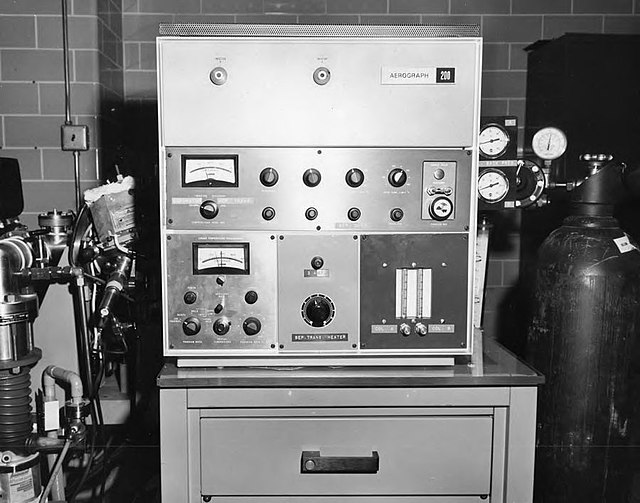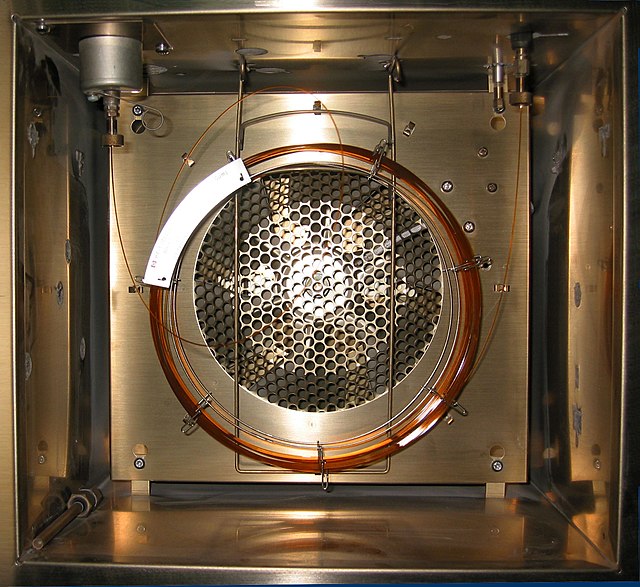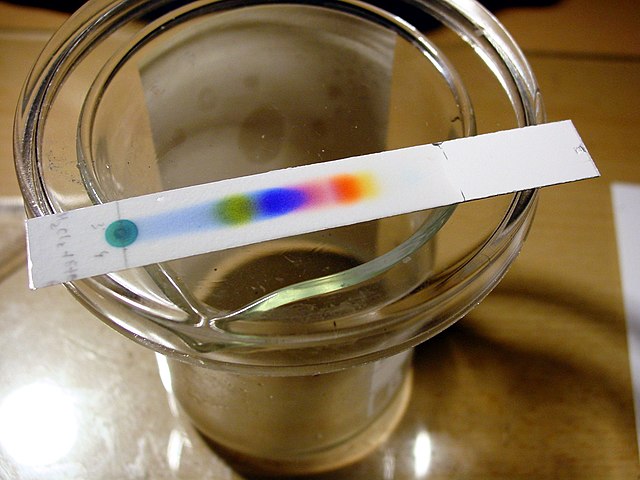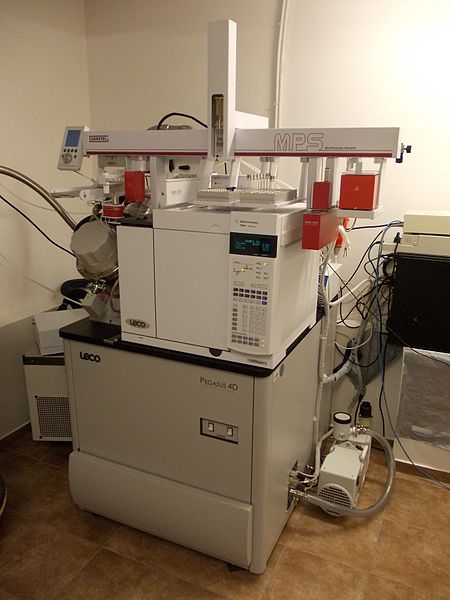Gas chromatography (GC) is a common type of chromatography used in analytical chemistry for separating and analyzing compounds that can be vaporized without decomposition. Typical uses of GC include testing the purity of a particular substance, or separating the different components of a mixture. In preparative chromatography, GC can be used to prepare pure compounds from a mixture.
A gas chromatograph with a headspace sampler
Gas chromatograph
The rule of ten in gas chromatography
A gas chromatography oven, open to show a capillary column
In chemical analysis, chromatography is a laboratory technique for the separation of a mixture into its components. The mixture is dissolved in a fluid solvent called the mobile phase, which carries it through a system on which a material called the stationary phase is fixed. Because the different constituents of the mixture tend to have different affinities for the stationary phase and are retained for different lengths of time depending on their interactions with its surface sites, the constituents travel at different apparent velocities in the mobile fluid, causing them to separate. The separation is based on the differential partitioning between the mobile and the stationary phases. Subtle differences in a compound's partition coefficient result in differential retention on the stationary phase and thus affect the separation.
Thin-layer chromatography is used to separate components of a plant extract, illustrating the experiment with plant pigments which gave chromatography its name
Paper chromatography in progress
Thin layer chromatography
Two-dimensional chromatograph GCxGC-TOFMS at Chemical Faculty of GUT Gdańsk, Poland, 2016








